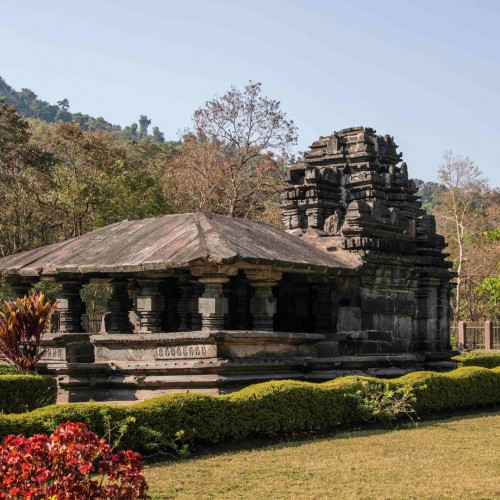Alila Yangshuo, China- A modern resort unveiled
Situated amongst a backdrop of karst mountains, rolling hills and winding rivers, the new Alila Yangshuo opens a chapter on modern retro, rich in history and design innovations. Once a working sugar mill, Alila Yangshuo has been transformed into an elegant and contemporary “retro” resort of 117 rooms and suites combining stylish simplicity with exceptional comfort and convenience that reflects the history of the sugar mill that once operated there and tells the legend of how it all began.
HISTORY
Located on the banks of the picturesque Li River, Alila Yangshuo was at one time a fully functioning and successful sugar mill. The current owners stumbled upon the project in 1997 when the sugar mill was still in operation. By 2002 all work had ceased in order to preserve the environment and the sugar mill and surrounding areas were left abandoned. A local developer was able to buy the property at auction and had grand plans to tear down the original factory, making way for a brand new commercial facilities on the site. Not happy with the fact that the historic buildings were to be destroyed, the current directors of Alila Yangshuo persuaded the previous owners to sell them the property instead so they could preserve the architecture of the old sugar mill and make it a living gallery.
Once the restoration and preservation plans were agreed upon, an author and artist was appointed to thoroughly research the history of the sugar mill. The historic facts and happenings of that era are then resurrected in story, while incorporating both the architecture and design elements, to blend with the old and the new modern resort. Mr Liu Chuan Hung spent three months in Taiwan painstakingly researching the sugar mill, sponsored by the Rockefeller Trust Fund. During this time, he came across “The Legend Of The Sugar Mill” and began to work on a series of 200 paintings to be displayed in Alila Yangshuo to illustrate the story. His work which was completed over the last two years, showcases the heritage of the sugar mill and depicts the incredible inspiration behind the Alila Yangshuo design and architectural vision.
The Legend: The Birth of The Sugar Mill
After pioneering a new sugar making technique, the sugar mill factory was opened by Mr Liu, who was also an avid art lover, in the early 1920’s. His vision for the sugar mill was to create a utopia for the country and the breath-taking beauty of the area was a perfect location to build his dream. Together with his business partners, Mr Liu created a successful sugar processing business and went on to open another branch in Hong Kong. However as the world headed towards an economic crisis, the demand for sugar production declined and with the support of the local Guangxi military, the sugar mill became a weaponry factory. Unfortunately, the operation was forced underground as the Chinese leader, Chiang Kai-Shek, was against the local military government and would not support the production change. Despite this, it became a very successful business venture for Mr Liu and his partners. When the war with Japan began, things began to slide downhill for Mr Liu. His father was killed by a Japanese bomber and Mr Liu was set on revenge. He spent most of his time in Hong Kong and sought out ways to spy on the Japanese. But as the war continued, the Hong Kong factory was bombed out and Mr Liu was forced to flee to Sichuan. Although Guilin, where the sugar mill is located, was eventually liberated, the whole city was destroyed and the sugar mill was left to lie in ruins.
Heritage Design
Like the owner in the Legend of the Sugar Mill, Alila Yangshuo aims to create a lifestyle destination for artisans and recreational pursuits. Without sacrificing design innovation and modern conveniences, the architecture of the modern retro resort brings the story of the historical sugar mill to life.
Award winning architect Dong Gong, Founding Partner of Vector Architects and interior designer Ju Bin, Founder and CEO of Horizontal Space Design, named one of China’s top 20 Interior Designers in 2016, have incorporated innovative ideas to complete this modern retro project that is Alila Yangshuo.
As a highly respected architect, Dong Gong is frequently consulted to share his philosophy regarding the use of light and space in relation to the natural surroundings of the building. With this in mind, Dong Gong has created Alila Yangshuo as a modern retro resort that blends seamlessly with the stunning landscape of Yangshuo while keeping intact the important heritage of the original sugar mill.
“Alila Yangshuo, as in many of our recent projects, is located in a natural site so I have the opportunity to think of how the environment can impact and influence the architecture and its function,” says Dong Gong. “I believe that an architect should be in awe of what is called ‘Tian’ in Chinese or ‘nature’ in Western culture. This means that when you are on site, you see with your heart and invoke the energy of the site environs to define the form and meaning for your architecture.”
The hollow block brickwork of the resort was drawn from the sugar blocks that were produced in the 1920’s. Dong Gong had to design a machine specifically to produce the custom-made hollow bricks using local sandstones and other materials gathered from earthworks in the construction of the underground Spa Alila. Using over 60,000 bricks, it took Dong Gong and five tradesmen over six months to hand-make each brick in the construction of the exterior walls of the resort.
“We contemplated how to give the building façade an airy sense of lightness, especially at night, with subtle lighting beaming through the walls,” states Dong Gong. “It is a building made of concrete but visually it possesses a quality of lattice work with light and air.”
Red volcanic rock was also discovered during the construction phase and was artfully incorporated in the building materials, paying homage to its origins. The volcanic rock was grounded and mixed into the terrazzo floors and also used on the wall screed, playing up subtle hints of red in the finished design. The same volcanic powder was also used to create beautiful pottery for the guest rooms. Slabs of local clay with etched motifs, are used on bathroom walls while clay etchings of local tradesmen and peasants in the 60s are used to decorate the headboards in the guest rooms.
The region of Guilin particularly Yangshuo, is famous for its limestone hills, tunnels and caves. Historically, these caves were commonly used by the locals and even served as war shelters.Bamboo scaffolds are used in abundance to shore up the tunnelling into the caves. In Dong Gong’s design concept for the new accommodation block, he assimilated the caves and bamboo shoring within the building and created some outstanding bamboo installation art pieces, that are hung-up in the voids to represent the caves in the hills. The passageways in the building are built as though one is going up and down hill slopes, with surprising ups and downs, some corridors leading to nowhere.
Other touches that historical highlights can be seen throughout the resort:
The 1969 Bar which reflects Ju Bin’s modern industrial design. This was the former pressing room where the original sugar press is situated. Leaving the entire concrete mounting intact, lights were run along the structure with a perspex flooring hoisted above, to serve as a sitting area for guests. The Bar will have more than 80 kinds of rum and will be serving delectable concoctions focused on the theme of sugar and rum.
The Sugar House Restaurant is also housed within the heritage building with old tools artfully incorporated into its contemporary designed interior.
The Pool - The original sugar cane loading dock has been transformed into a spectacular swimming pool overlooking the Li River. At night, Alila Yangshuo forms the backdrop of a spectacular light show, played out from the river beyond, turning the resort into a stage production.
With a delicate balance of new and old, both the architect and interior designer, have successfully integrated the historic details of the old sugar mill, to complement the contemporary architecture. “In defining the Chinese aesthetic concept of ‘beauty is in the old and the turbid’, the design team feels that the buildings must contain elements of the original sugar mill. ‘Beauty in the turbid’ means that the space must contain a touch of rusticity and must not be too refined,” states interior designer Ju Bin. Like in the case of the arrival hall at the resort, it is akin to a gallery of design arts. “The entire interior space in the old building has been transformed into an industrial space. Works of artisans, young and old, new and acclaimed, are thrown together, giving sense to ‘beauty in the turbid’ as understood in Chinese culture.”
The Legend of the Sugar Mill will be depicted via a series of paintings created by Mr Liu and will link the history of the sugar mill to the modern retro resort that is Alila Yangshuo today. The book will be available in all guest rooms and in the resort’s library.
You might also like
Piramal Museum of Art announces their September events
S.H. Raza: Traversing Terrains opened at the Piramal Museum of Art, Mumbai, on 24 June 2018 and will be on view till 16 December 2018. The exhibition is accompanied by
Air India increases fuel surcharge for overseas flights
Domestic jet fuel prices rose 8.6% from January 1 in line with the rising crude oil prices! International air travel is set to get costlier as Air India on Thursday
IHCL signs its fourth Taj Hotel in Dubai
The Indian Hotels Company Limited (IHCL) has announced the signing of a new Taj hotel at the Deira Creek in Dubai in partnership with Ithra Dubai LLC, a wholly owned








